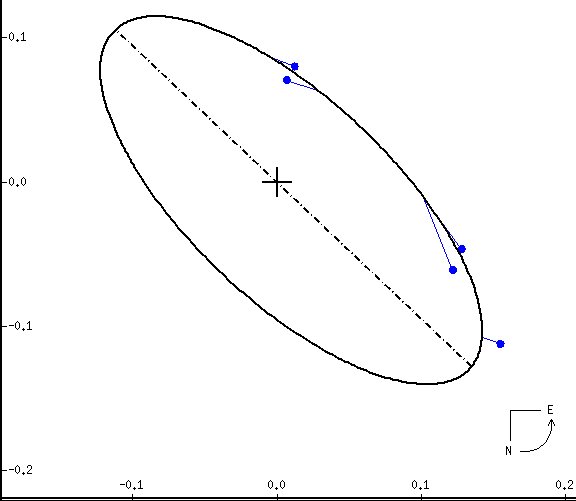
 |
Only a few observations determine the orbit of Psi Pegasi B about Psi Peg A (at the cross). In reality, each star is in orbit about a common center of mass that cannot be defined for this pair because of insufficient data. Given a distance of 476 light years, the fitted path suggests a separation of 25 Astronomical Units and a period of 55.1 years. Psi A does not appear at the focus of the fitted ellipse because of the tilt and orientation of the orbit, which does not appear face-on. (From the US Naval Observatory Double Star Catalog, courtesy of Bill Hartkopf.) |